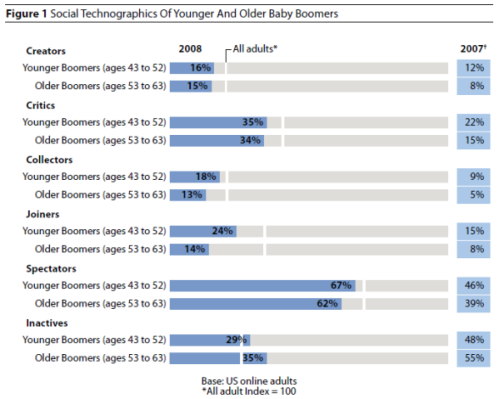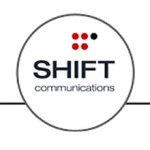 Before social media use can begin to affect communication and public relations, it must encompass fundamental building blocks of social media efforts. What does this mean? Do not start blogging, tweeting or Facebooking without a purpose and an outline of goals. One of the common mistakes people make when they begin exploring and using social media is doing so without a strategic plan. It is important to post meaningful information with confidence, which many users struggle to do. The ability to obtain social media credibility and gain a large audience is accomplished by attacking social media with a well-developed plan.
Before social media use can begin to affect communication and public relations, it must encompass fundamental building blocks of social media efforts. What does this mean? Do not start blogging, tweeting or Facebooking without a purpose and an outline of goals. One of the common mistakes people make when they begin exploring and using social media is doing so without a strategic plan. It is important to post meaningful information with confidence, which many users struggle to do. The ability to obtain social media credibility and gain a large audience is accomplished by attacking social media with a well-developed plan.
Social Media Blueprint
In a recent blog post by Chris Brogan, he outlines the priorities for new social media users. Below are summaries of Chris’s ideas.
Goals: Maintain and achieve goals with social media. If the original plan is not followed, there is no point in continuing with it. Develop several objectives to always remember while blogging and Tweeting.
Dashboard: Be able to measure social media success. Within the defined objectives, clearly state ways to measure and evaluate the success. Without measurements, success rates will not be steady.
Strategies: Create several strategies that will help accomplish the goals. If they become too specific, turn a couple of them into tactics.
Social Media Values
Listen: This allows users to obtain data, metrics and material to write about when using social media. It also allows users to understand the audience for which they are writing.
Read/Consume: Reading allows users to see other people’s perspectives and to learn about the latest and greatest online tools and trends. Reading and consuming information can never occur too often; there is always time to learn something new.
Read the remainder of Brogan’s blog post for complete lists of his social media priorities and vaules.
When Strategy Works
In the following video, learn how Proctor and Gamble used a smart social media strategy to increase tampon sales with young girls. Since the product is somewhat of a taboo topic, the company addressed the issue in a creative way with a Web site featuring the problems teenage girls encounter, including the use of tampons.
Why This Matters To PR
When businesses decide to engage in social media, they must do so with a defined outline of goals, strategies and tactics. PR professionals should be involved in this process, as many companies are now looking to the PR folks for advice and guidance with social media—but it has to be the right information. Practitioners should not advise their clients or employers to use social media without first implementing a team of associates to craft overall objectives, strategies and ways to evaluate success. Without these elements, the use of social media for business purposes is pointless. Just like PR professionals use objectives, strategies and tactics with daily projects, they must apply the same ideas for social media. Having an outlined plan is not only practical, but it provides greater opportunity for success.


 utilizing social networking sites to reach those audiences. One current special event that has been promoted through social media is the 2009 Public Relations Student Society of America’s (PRSSA) National Conference in San Diego, Calif., on Nov. 6-Nov. 10. As an officer for the Kent State University Chapter of PRSSA, I have the privilege of attending this year’s event. Not only is this my first PRSSA National Conference, it is my first trip to the west coast, and I can hardly wait!
utilizing social networking sites to reach those audiences. One current special event that has been promoted through social media is the 2009 Public Relations Student Society of America’s (PRSSA) National Conference in San Diego, Calif., on Nov. 6-Nov. 10. As an officer for the Kent State University Chapter of PRSSA, I have the privilege of attending this year’s event. Not only is this my first PRSSA National Conference, it is my first trip to the west coast, and I can hardly wait!
 During Conference, I will have the opportunity to network with professionals, learn about the workings of PR in various industries and obtain tips on how to sharpen my resume. One of the other benefits is having the chance to meet other PR students from around the country. One thousand students registered for the event, so I will have no problem meeting new people. This is going to be an awesome experience, but for some reason it does not seem real. It could be because I have yet to leave, but I know as soon as I board the plane to sunny California, the excitement will definitely set in!
During Conference, I will have the opportunity to network with professionals, learn about the workings of PR in various industries and obtain tips on how to sharpen my resume. One of the other benefits is having the chance to meet other PR students from around the country. One thousand students registered for the event, so I will have no problem meeting new people. This is going to be an awesome experience, but for some reason it does not seem real. It could be because I have yet to leave, but I know as soon as I board the plane to sunny California, the excitement will definitely set in! Almost all of the posts for this blog have provided ways social media can benefit one’s personal career or a company’s success, but now it is time to point out the negative aspects of Facebook, Twitter, LinkedIn, etc. However, it is important to note that many of the negatives occur because of human error.
Almost all of the posts for this blog have provided ways social media can benefit one’s personal career or a company’s success, but now it is time to point out the negative aspects of Facebook, Twitter, LinkedIn, etc. However, it is important to note that many of the negatives occur because of human error. Has social media given public relations a louder voice at the decision-making table? And are businesses looking to their PR representatives instead of their marketers for social media advice? Many professionals say yes and agree they have struggled to prove their business value to marketing professionals who fail to see the benefits of public relations. But now that social media has such a strong presence in business, companies realize how PR practitioners use the Internet to maintain the positive, long-term business reputations they have worked so hard to uphold.
Has social media given public relations a louder voice at the decision-making table? And are businesses looking to their PR representatives instead of their marketers for social media advice? Many professionals say yes and agree they have struggled to prove their business value to marketing professionals who fail to see the benefits of public relations. But now that social media has such a strong presence in business, companies realize how PR practitioners use the Internet to maintain the positive, long-term business reputations they have worked so hard to uphold.

 With the vast amount and variety of tools available for online communication, it makes sense that some individuals and businesses are hesitant when choosing the online tool that will best achieve their communication objectives. This is because many sites offer similar features, while others are specific to uses such as profile or photo and video sharing.
With the vast amount and variety of tools available for online communication, it makes sense that some individuals and businesses are hesitant when choosing the online tool that will best achieve their communication objectives. This is because many sites offer similar features, while others are specific to uses such as profile or photo and video sharing.




 When using social media it is essential to utilize it properly and efficiently. Though communicating through social media is innovative, it has to be done without any spelling, grammar, technical or style errors. If this occurs, an organization will not be taken seriously and its business objectives could be neglected.
When using social media it is essential to utilize it properly and efficiently. Though communicating through social media is innovative, it has to be done without any spelling, grammar, technical or style errors. If this occurs, an organization will not be taken seriously and its business objectives could be neglected. 
 No more are the days of communication made only through face-to-face or phone conversations. With the advent of social media and networking sites, people can communicate through countless means. While the use of these sites, such as Facebook, Twitter and MySpace, is convenient, it also allows for informal, improper and ungrammatical communication. And many students today are letting those negative attributes influence communication outside their cyberspace, specifically in written papers for classes or face-to-face and phone conversations with professionals. It is fascinating how some
No more are the days of communication made only through face-to-face or phone conversations. With the advent of social media and networking sites, people can communicate through countless means. While the use of these sites, such as Facebook, Twitter and MySpace, is convenient, it also allows for informal, improper and ungrammatical communication. And many students today are letting those negative attributes influence communication outside their cyberspace, specifically in written papers for classes or face-to-face and phone conversations with professionals. It is fascinating how some  students believe it is acceptable to submit class assignments with written words like: no (know); luv (love); i (I); 2 (to, two and too); u (you); 2morrow (tomorrow); sry (sorry) and many more. This kind of writing becomes a habit when using social media and networking sites; so much that students forget to proof read their work and do not eliminate words such as those above.
students believe it is acceptable to submit class assignments with written words like: no (know); luv (love); i (I); 2 (to, two and too); u (you); 2morrow (tomorrow); sry (sorry) and many more. This kind of writing becomes a habit when using social media and networking sites; so much that students forget to proof read their work and do not eliminate words such as those above.
